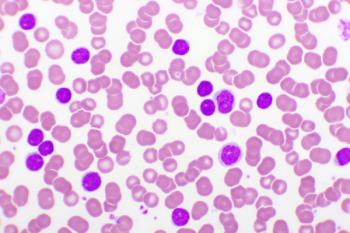
Lorundrostat Yields Promising Results for Treatment of Hypertension in Patients with CKD and Albuminuria
Lorundrostat shows promise in reducing blood pressure and proteinuria in patients with hypertension and chronic kidney disease (CKD), highlighting its dual-action benefits.
Lorundrostat (Mineralys Therapeutics) significantly lowered both systolic blood pressure and proteinuria in patients with hypertension and chronic kidney disease (CKD), according to positive topline results from Mineralys Therapeutics’ phase 2 Explore-CKD trial (NCT06150924), supporting its potential as a dual-action treatment for cardiovascular and renal protection.1
“Prolonged elevations in blood pressure in patients with compromised renal function can damage the small blood vessels in the kidneys, further reducing their ability to function properly,” Matthew Weir, MD, director of the Division of Nephrology at the University of Maryland Medical Center and professor of Medicine at the University of Maryland School of Medicine, said in a
Hypertension affects approximately 1 in 3 adults in the US, but the burden is even greater among those with CKD.2 Data from a nationally representative survey published by the National Institutes of Health show that hypertension prevalence rises sharply with CKD severity, from 23.3% in individuals without CKD to 84.1% in those with stage 4 or 5 CKD.
Lorundrostat, an aldosterone synthase inhibitor (ASI), demonstrated significant reductions in systolic blood pressure and proteinuria among individuals with comorbid CKD, 2 key indicators of kidney and cardiovascular health.1 The trial also showed that the drug has a favorable safety and tolerability profile, with only a few treatment-related adverse events.
The Explore-CKD trial included 59 participants with hypertension and CKD, characterized by an estimated glomerular filtration rate (eGFR) 30 mL/min/1.73 m² or more and albuminuria (UACR 200-5000 mg/g). The trial used a double-blind, placebo-controlled, crossover design to evaluate 25 mg once-daily dosing of lorundrostat in combination with existing standard-of-care therapy, including sodium-glucose cotransporter 2 (SGLT2) inhibitors and either ACE inhibitors or angiotensin receptor blockers.
The trial met its primary end point, demonstrating a placebo-adjusted reduction in systolic automated office blood pressure of 7.5 mmHg (P = .0024). This reduction is considered clinically meaningful, particularly in a renally compromised population. In addition to blood pressure improvements, lorundrostat also reduced urine albumin-to-creatinine ratio (UACR) by 25.6% compared with placebo (P = .0015), suggesting potential renal protective effects. A modest decline in eGFR was also observed (–4.58% placebo-adjusted), which aligns with the known effects of other agents in the renin-angiotensin-aldosterone system pathway and is considered part of the therapeutic mechanism rather than a sign of toxicity.
Adverse events were limited; 2 patients (3%) discontinued lorundrostat due to changes in kidney function, and 3 cases (5%) of confirmed hyperkalemia were reported, although none exceeded protocol safety thresholds. There were 2 serious adverse events during the lorundrostat treatment phase, but none during placebo.
“The evidence generated from this trial demonstrates the unique mechanism of action and benefit of lorundrostat in lowering systolic blood pressure and UACR," Weir
With ongoing studies including the long-term Transform-HTN extension trial and the recently launched Explore-OSA trial in patients with obstructive sleep apnea and uncontrolled hypertension, Mineralys continues to build a strong case for lorundrostat as a promising treatment for multiple aldosterone-driven conditions.
References
1. Mineralys Therapeutics announces positive topline results from phase 2 Explore-CKD trial of lorundrostat for the treatment of hypertension in subjects with CKD and albuminuria. News release. Mineralys. June 17, 2025. Accessed June 20, 2025.
2. Tedla FM, Brar A, Browne R, Brown C. Hypertension in chronic kidney disease: navigating the evidence. Int J Hypertens. 2011;2011:132405. doi:10.4061/2011/132405
Newsletter
Stay ahead of policy, cost, and value—subscribe to AJMC for expert insights at the intersection of clinical care and health economics.









































